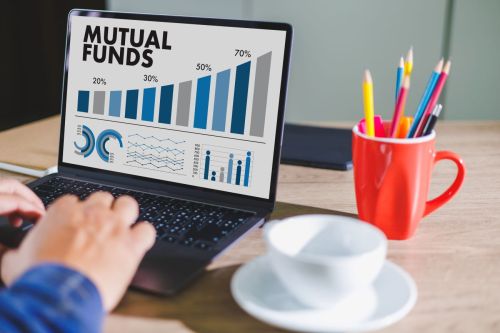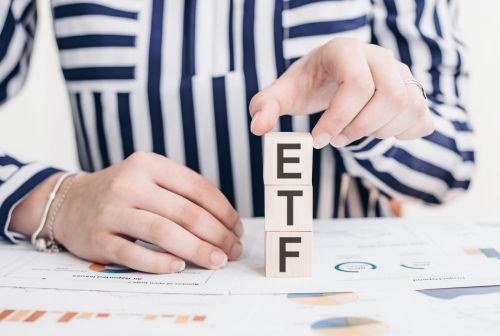How many of us knew what investing is when we were kids? Probably not many. But today’s kids and teens can watch finance influencers on TikTok, and things like cryptocurrency and “meme” stocks are trending.
With so many resources available, it’s easier for teens to dip their toes into the world of investing, which means it’s the ideal time to start teaching your kids some basic investing definitions. After all, how can you discuss the pros and cons of short selling GameStop shares if they aren’t sure what short selling is?
And the reality is that we could all use a refresher when it comes to financial terminology, right? Read on to learn the meaning behind 45 investment terms that you and your kids need to know.
45 investment terms to know
1. Asset
An asset is something that has economic value now or might have value in the future—for example, a house, a car, a piece of art, a financial security (the term for an asset that can be bought, sold, or traded), or a patent.
2. Asset allocation
This is an investment strategy that aims to balance risk and reward. Asset allocation involves spreading your investments across different types of assets, including stocks, bonds, and cash.
3. Bear market
A bear market is when stock prices decline by at least 20 per cent for two months (or more); think of a bear swatting its paw downward. Often, bear markets are caused by investor uncertainty—for example, when the COVID-19 (Coronavirus) pandemic hit in 2020, investors around the world panicked and started selling off their stocks and bonds, which triggered a short-lived bear market. Savvy investors might be able to benefit from bear markets by investing in stocks at relatively low prices, though some experts say it’s better to invest in stocks long-term instead.
4. Bull market
This happens when stock prices are on the rise, or are expected to rise, by at least 20 per cent after falling by 20 per cent; think of a bull thrusting its horns upward. Bull markets can last for months or even years; the longest bull market so far lasted from 2009 to 2020. If bear markets are caused by investor fear or uncertainty, bull markets signal investors’ confidence. Bull markets tend to happen when the economy is strong, unemployment is low, and corporate profits are rising. To take advantage of a bull market, investors usually buy early on, when stock prices are still relatively low, and hold off on selling until prices have reached a peak.
5. Bond
Bonds allow companies or governments to raise funds by borrowing from the public. Investors buy bonds for a specific period of time. During that time, they receive regular interest payments, and at the end of the term—the bond’s “maturity date”—the company or government repays the principal loan amount.
6. Broker
This is a company or individual that buys and sells securities, such as stocks or bonds, on behalf of its clients.
7. Capital gains
Capital gains refers to the money an investor makes when they sell an investment for a higher price than they paid; this is one way investors make money from their investments. (Another is dividends, which we’ll get into later.) Capital gains are taxed, based on how long the investor held the investment. If it was less than a year, it’s considered a short-term capital gain, which is taxed like regular income. If it was longer than a year, it’s considered a long-term capital gain, which is taxed at a lower rate. The opposite of capital gains is capital losses, which means you sold an asset for less than the price you paid for it.
Read more about tax terms and definitions for kids.

8. Commodities
Commodities are raw materials or agricultural products, and they usually fall into one of four categories: metals, energy, livestock and meat, and agricultural products. Commodities are considered a risky investment since their value relies on supply and demand. In Canada, our metal commodities include gold and aluminum. When it comes to energy, we are one of the world’s top producers of oil and gas. Our main meat export is beef, and our main agricultural commodities are meat and canola.
9. Common stock
This is the type of stock issued to the majority of shareholders in a company. Common shareholders have voting rights, but, should the company need to liquidate its assets, creditors, bondholders, and preferred shareholders will be paid before any common stocks are paid out.
10. Diversification
This is a technique investors use to reduce the risk of losing money by spreading investments across a variety of industries and assets. It’s ideal to have a diverse portfolio so that if prices for one type of investment (for example, commodities) are falling, there are still other investments that are unaffected.
11. Dividend
This is another way investors make money from their investments. The first is capital gains, which are profits from the sale of an investment. Dividends, on the other hand, are payments that corporations make to current shareholders. (So, while they still own their stocks.) Dividends come from companies’ earnings, and they are usually paid in cash, though they’re sometimes paid in additional stock.
12. Dividend Reinvestment Plan (DRIP)
DRIP is a plan that allows investors to automatically reinvest any dividends they earn into more shares.
13. Earnings Per Share (EPS)
EPS is a calculation used to estimate the profitability of a company. It’s the net profit divided by the number of common shares owned by its shareholders. This ratio helps investors understand how much money a company makes per share, so they can see how valuable each share—and, by extension, the company—is.
14. ESG investment funds
ESG stands for environmental, social, and governance. These funds invest in companies that prioritize sustainability, ethical business practices, and good corporate governance. They’re a way to ensure your investments are socially responsible.
15. Equity
The term equity is used in finance in three different ways. When you hear the term “equity portfolio,” it means the investor owns stocks that give them an ownership stake in the company. Meanwhile, if you see the term “shareholders’ equity,” that refers to the amount of money that would be left for the owners if a company used its assets to pay off its debt. This number can be positive or negative depending on how much profit a company generates and how much money it owes. The third way you might see equity is in the term “private equity,” which is when high-net-worth investors directly invest in private companies that are not listed on a stock exchange or buy publicly traded companies and turn them into private ones.
16. Exchange-traded funds (ETFs)
ETFs function like a combination of mutual funds and conventional stocks. They’re pooled investment funds, or “baskets” of securities, that may include stocks, bonds, commodities, or currencies. But like with stocks, investors can buy a share of a basket.
17. Futures
This is a financial contract that requires a buyer to purchase a specific asset and a seller to provide that asset at a specific time in the future. The product could be anything from oil to gold to U.S. dollars to ETFs.

18. Hedge fund
This is a financial partnership between a fund manager (the general partner) and investors (limited partners) who pool their funds, then use different, often aggressive strategies to achieve higher returns. They’re called hedge funds because managers often use hedging strategies, such as investing in both potentially winning and potentially losing assets, to help minimize their risk.
19. Index fund
An index fund is a type of mutual fund or ETF. Its portfolio of securities is specifically chosen to match the makeup of a market index, such as the S&P 500, Dow Jones, or Nasdaq. Index funds aren’t actively managed (unlike a hedge fund) and therefore have lower fees. The idea behind index funds is that in the long run, the market will generate greater returns than any one investment.
20. Initial public offering (IPO)
Also known as a stock launch, an IPO describes a company’s transition from a private to a public corporation by offering shares to the public for the first time. This allows a company to raise capital through investment from the public.
21. Investment portfolio
This refers to an investor’s collection of investments, which can include stocks, bonds, commodities, and cash, as well as other assets, such as artwork or real estate.
Read more about how to invest as a teenager in Canada.
22. Management expense ratio (MER)
Sometimes called an expense ratio, the MER calculation determines the cost of operating a fund (for example, administrative expenses). The higher the cost, the bigger the hit a fund’s assets will take, which reduces how much investors make.
23. Margin account
This is a type of account that allows you to borrow money to invest. When an investor purchases a stock in a margin account, they pay part of the purchase price and borrow the rest from a broker. If your investment earns interest or dividends, that can be applied to the loan.
24. Market capitalization
Also known as market cap, this is the total value of a company’s shares. You can calculate it by multiplying the total number of outstanding shares (i.e., those owned by a company’s shareholders) by the current price of the company’s stock. For example, if Starbucks had 1 billion outstanding shares and its stock price were $90, its market cap would be $90 billion.
25. Market order
Market orders are instructions from an investor to their broker to buy or sell a security immediately. (More on what securities are below!)
26. Market timing
This is an investment strategy that involves trying to predict the best times to buy or sell stocks in order to maximize profit. It can be difficult for individual investors to time the market effectively, and even institutions often depend on trading software to help.
27. Mutual fund
A mutual fund is a professionally managed fund that pools money from multiple investors to invest in a variety of securities, including stocks and bonds. They usually require a relatively small minimum investment and, since they invest in multiple securities, are considered less risky.
28. NASDAQ Composite (IXIC)
This is a stock market index that includes all the stocks listed on the NASDAQ stock exchange. It shouldn’t be confused with the NASDAQ-100, which only tracks the 100 largest companies listed on the exchange.
29. Non-registered investment account
When investments in this type of account earn income, it’s considered taxable, which is why these accounts are sometimes referred to as “taxable” or “open” accounts.
30. Portfolio
Sometimes called an investment portfolio, this term refers to all of someone’s investments, including stocks, bonds, commodities, cash, and other assets.
31. Preferred stock
This is a type of stock issued to a company’s shareholders. Preferred shareholders receive dividend payments before common shareholders—usually monthly or quarterly—but generally do not have voting rights.
32. Price-to-earnings ratio (P/E)
This is a method that determines a company’s value by comparing its stock price to its actual earnings per share. A high P/E may indicate that a stock price is overvalued, while a low P/E could indicate that it’s undervalued. However, this is not a hard and fast rule; sometimes a company has a high P/E ratio because investors believe it has good growth potential.
33. Prime rate
This is the interest rate that Canada’s major banks and financial institutions use to set interest rates for their loans. The Big Five banks in Canada usually have the same prime rate. At the time of publishing this article, the prime rate in Canada is 2.7 per cent.

34. Registered Education Savings Plan (RESP)
An RESP is a type of registered account that is intended to save for a child’s education. The funds can be put toward tuition, books, computers, transportation, or housing. There is a maximum lifetime contribution limit of $50,000, and when the beneficiary withdraws this money, it is taxed at their income tax rate.
Learn more about how income tax works in Canada.
35. Registered Retirement Savings Plan (RRSP)
Like an RESP, an RRSP is a registered investment account. It’s intended to help Canadians save for retirement. There are different types of RRSPs—individual, spousal, and locked-in. A locked-in RRSP often can’t be touched until the person reaches the age of 55. The annual contribution limit for RRSPs changes from year to year, but for the 2021 tax year, it’s 18 per cent of your previous year’s income to a limit of $27,830. Like RESPs, this is a tax-deferred investment.
36. Securities
These are financial instruments that are fungible—which essentially means they’re tradeable because they are identical in value to one another. There are three broad types of securities: equity, which gives holders ownership rights; debts, which entitle holders to interest payments; and hybrids, which combine the two.
37. Short selling
When investors short-sell stock, it means they think it will decrease in value. Here’s how it works: An investor will borrow stocks from a broker, then sell them. Eventually, though, the investor must “cover” by buying back the stocks they just sold to return them to the broker. Ideally, the stock price drops so they can buy it back for less than they paid, yielding a profit. But, if they’re wrong and the stock price rises, they lose money.
38. Standard & Poor’s 500 (S&P 500)
This is an index consisting of 500 of America’s leading publicly traded companies, based on market capitalization.
39. Stock
A stock represents an investor’s partial ownership in a corporation, which grants them a portion of the company’s assets and profits. There is technically a difference between a stock (a slice of ownership in one or more companies) and a share (a slice of ownership in a particular company), but today, these terms are used more or less interchangeably.
40. Stock exchange
This is a market where securities, like stocks and bonds, are bought and sold. Most countries have their own stock exchange.
41. Tax-Free Savings Account (TFSA)
A TFSA is a registered investment account where income earned is not taxed (even upon withdrawal). There is generally an annual contribution limit, and a total contribution limit. In 2022, the annual limit is $6,000. The lifetime limit is $81,500 for 2022.
42. Technical analysis
This refers to a method of evaluating potential investments by looking at past price trends and patterns. It can be used on any security—including stocks, commodities, and currencies—as long as it has historical data to analyze. But when it comes to forecasting how a stock might perform, technical analysis is only one school of thought. The opposite approach is called fundamental analysis, which looks at all the factors that contribute to a stock’s price, including a company’s assets and liabilities and even the overall economy.
43. Toronto Stock Exchange Composite (TSX)
This is Canada’s benchmark index—consisting of about 250 of the country’s leading publicly traded companies—and it’s based on market capitalization.
44. Volatility
Volatility indicates that a stock’s—or an entire stock market’s—value is fluctuating. Volatility is usually caused by uncertainty; for individual stocks, this can happen around quarterly earnings reports. On the other hand, world events, like COVID-19 or the 2020 U.S. presidential election, can cause enough uncertainty to impact the entire stock market.
45. Yield
Yield is the amount of money an investment earns during a specific time period. It’s usually expressed as a percentage. (This is not the same thing as a return, which is how much an investment gains or loses over time as a dollar value.)
Why kids and teens should learn investing basics
As parents, when we teach our kids about financial literacy, we often do so through the lens of smart spending and saving for the future. But investing is part of a long-term strategy to grow your money over time.
Mydoh can help young adults learn about the process of investing. By breaking down financial literacy in fun, engaging ways, you’ll empower your kids to take charge of their finances. They’re also likely to be better equipped to mitigate risk when investing in their future.
Download Mydoh and help build the foundation of financial literacy for your kids and teenagers.
This article offers general information only and is not intended as legal, financial or other professional advice. A professional advisor should be consulted regarding your specific situation. While the information presented is believed to be factual and current, its accuracy is not guaranteed and it should not be regarded as a complete analysis of the subjects discussed. All expressions of opinion reflect the judgment of the author(s) as of the date of publication and are subject to change. No endorsement of any third parties or their advice, opinions, information, products or services is expressly given or implied by Royal Bank of Canada or its affiliates.
























